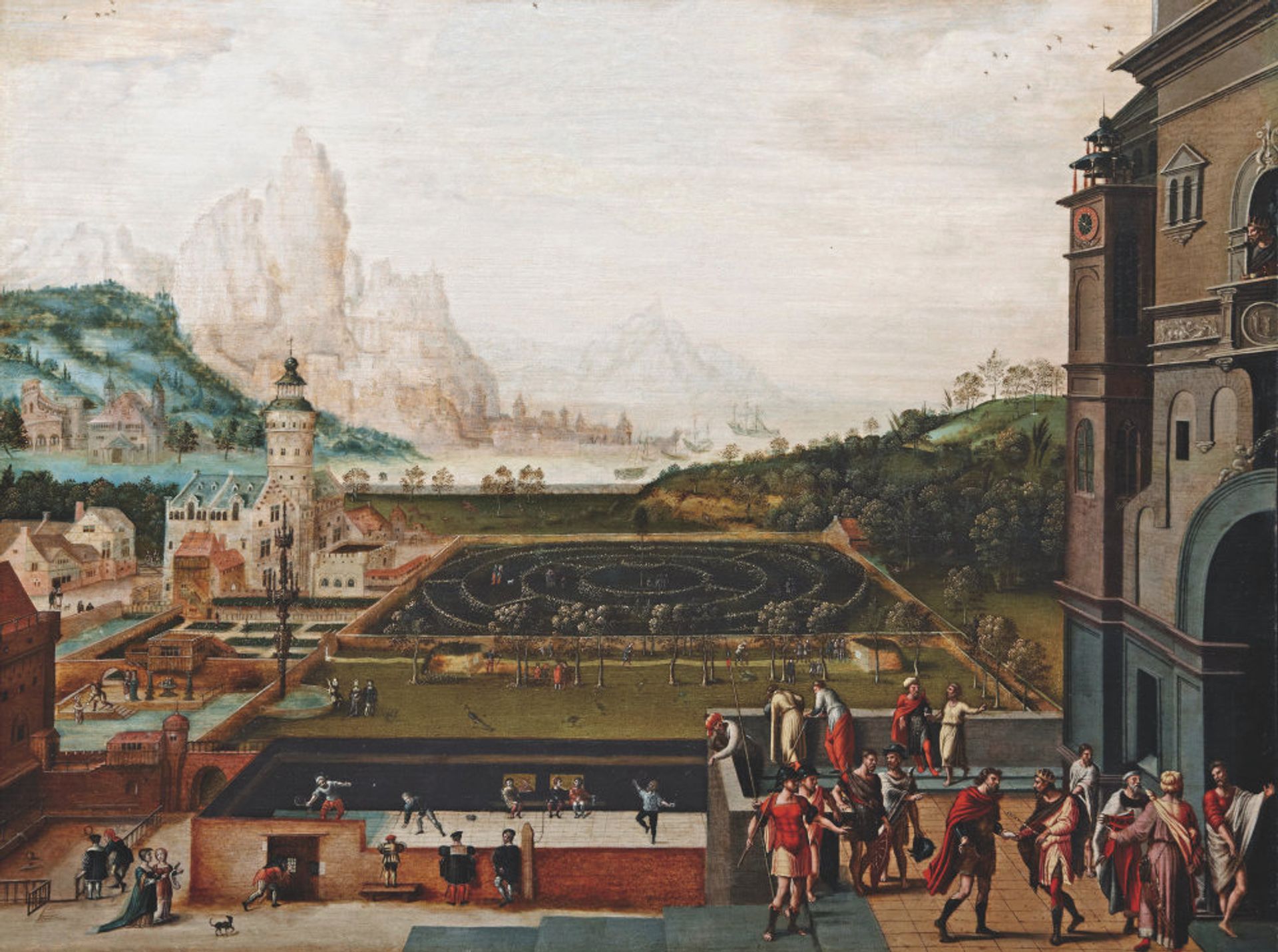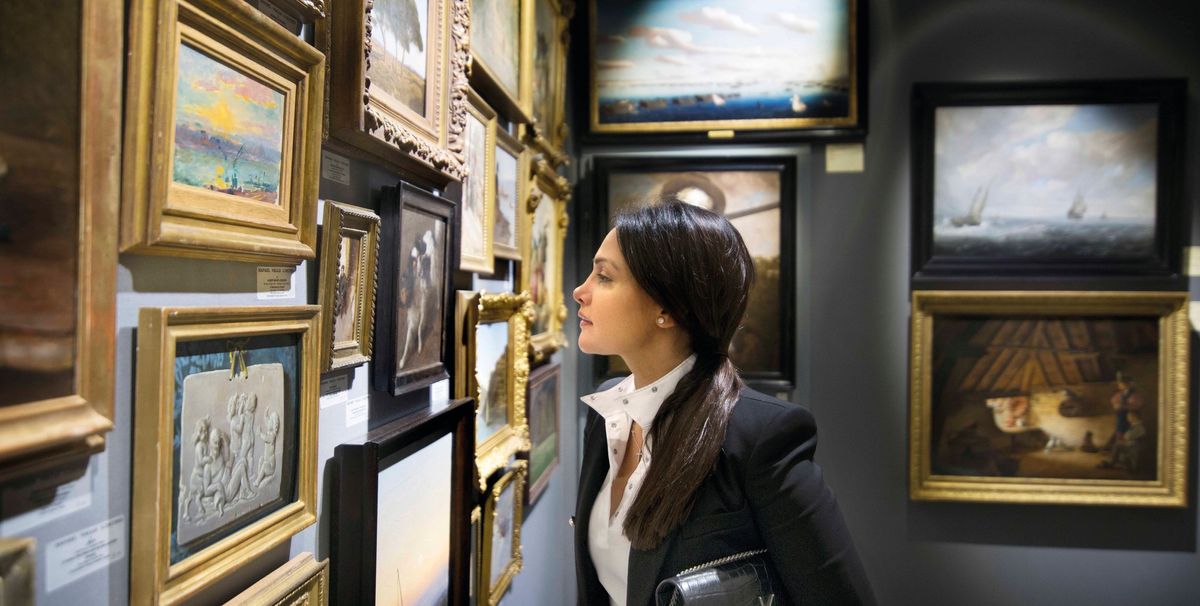At the VIP opening of the 30th edition of The European Fine Art Fair (Tefaf) in Maastricht (10-19 March), the question on many people’s lips was whether US collectors and institutions would travel to Europe now that the Dutch fair has editions in New York. Although the number of exhibitors in either the spring or autumn New York fairs (a little over 90 in each) is no match for the 275 exhibitors in Maastricht, some dealers were sceptical—but remained hopeful—that Americans would make the trip despite the current economic and political climate.
Michael Plummer, the co-founder of Artvest, which is responsible for the New York fairs, recently told The Art Newspaper that he believed that the US editions would drive American traffic to Maastricht. While it may be too early to put this statement to the test—the second edition of Tefaf New York does not open until next month—it was evident when the fair opened that some Americans were in town. Galleries said they had seen representatives from US museums, including the J. Paul Getty Museum in Los Angeles, wandering the aisles.
Some early sales were made to US private collectors. One of the fair’s highlights, a Dutch doll’s house (1690-1710) with 200 silver miniatures, sold to a US collector at John Endlich Antiquairs (asking price €1.75m) along with a 17th-century windmill cup. Both works will go on long-term loan to the Museum of Fine Arts, Boston. At Charles Ede, a bronze statuette of an Apis bull sold to a New York collector (asking price £65,000). Another New York collector bought a rare 18th-century Alaskan sculpture from the historic Native American art dealer Donald Ellis, who is new to the fair this year, for a price “in the low six figures”.
Dealers reported, however, that most sales were made to European museums, foundations and private collectors. Italian minimalist works at Tornabuoni Art, including a €1m piece by Paolo Scheggi, went to clients in Europe, Brazil and the UK. Les Enluminures sold a Medieval gospel book from Liesborn Abbey in Westphalia to the German state for more than $3m, and Austrian dealer Wienerroither & Kohlbacher sold a Schiele drawing to a private German collection for €400,000. Four works from Colnaghi went to European foundations within the first hour of the VIP day, including a Caravaggesque still-life by Bartolomeo Cavarozzi (asking price €5m). While most of these sales had seven-figure price tags, many said that pieces in the five and six-figure range also sold well.
However, this year’s edition was not without its controversies. A contemporary work by the Italian artist Luca Pignatelli was removed from Piva & Co’s stand by the vetting committee before the fair opened. The piece—a 20th-century Persian carpet with a classical bust painted on it—was deemed inappropriate because it “damaged an antique to create a contemporary work”, said Tomaso Piva, who added that the officials’ decision was not unanimous. Additionally, the Dutch media reported grumbling among a few galleries because four dealers at the fair were recently involved in fakes scandals. None of the controversial works had been shown at the fair.
Overall, exhibitors said they were pleased with the turnout and general mood. “It was about ten years ago that we last felt such a dynamic atmosphere at the start of a fair, and this positive flow did not stop after the preview,” said Christine De Backker, a specialist in Medieval art who was exhibiting here for the first time. When asked why they return year on year to Maastricht despite the increasingly crowded fair schedule, dealers by and large agreed that it was still the place to be. The Italian gallerist Alessandra Di Castro summed it up: “Tefaf Maastricht is where you find the real market.”
Recalibrated report paints alternative picture The economist and university professor Rachel Pownall, newly in charge of Tefaf’s annual art market report following the departure of Clare McAndrew, estimates that in 2016 the global art market was worth $45bn—an increase, she says, of 1.7% compared with 2015. Although she found a global 18.8% slump in public auction sales, private sales increased for dealers and auction houses alike. Galleries and dealers saw a 24% rise, while private deals at auction houses reached $2bn in 2016. According to the report, private sales now account for around 70% of all sales worldwide. However, if McAndrew’s figures from 2015 are taken into account, $45bn represents a sizeable drop from the $63.8bn reached that year. Pownall says the discrepancy in figures is the result of her focusing on a more “specific definition of art dealers and galleries” than did previous reports.
Hedgehogs, tennis and a furry face

Collection of ancient hedgehogs
Rupert Wace
This set of 11 ancient figurines was assembled by the art dealer John Kasmin, who championed colour field painting, discovered David Hockney and has been “obsessed with hedgehogs for the past decade”, according to the gallery’s Charlotte Reeves. The pieces, which range in size, material and date, are priced from €4,000 to €55,000; one had sold as we went to press.

Lucas Gassel (around 1500-69)
Galerie De Jonckheere
In his painting The gardens of a Renaissance palace, with episodes from the story of David and Bathsheba, the Flemish artist Lucas Gassel updated the Bible story to include several 16th-century courtly activities, such as secret rendezvous in a maze, boule à l’anneau (an early form of croquet) and archery. But what makes this picture particularly interesting is that in the foreground it contains one of the earliest known depictions of a tennis match. The work, priced at €1.25m, had not sold as we went to press.

Portrait of Barbara van Beck (17th century)
Agnew’s
There is thought to be a link between this 17th-century sitter, her rare genetic disorder hypertrichosis universalis, which is characterised by excessive hair growth, and the Star Wars character Chewbacca, says Anna Cunningham from Agnew’s. It turns out that Han Solo’s sidekick was modelled on a Russian sideshow performer who had the same affliction as Van Beck. The work by an unidentified artist, priced at around £200,000, had not sold as we went to press.


